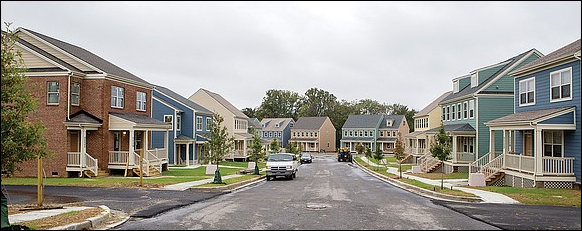
The premise behind public housing is that “market failure” fails to supply enough decent and affordable housing for poor people. Government must intervene in the housing marketplace not only with subsidies but as a real estate developer to fill the gap. What government succeeded in creating all too often — from Chicago’s infamous Pruitt Igoe towers to Richmond’s public housing courts — is concentrated poverty, crime and social dysfunction. Learning from past disasters, the public housing sector now sees the solution as diluting poverty by bundling low-income housing with middle-class housing under the rubric of “mixed-income” development.
Ironically, the consequence of implementing this philosophy in Richmond is less low-income housing and more middle-income housing.
The Richmond Redevelopment and Housing Authority has decided not to replace 22 of the 60 public housing units in Dove Court that were bulldozed in 2008 in order to make way for a a mixed-income community called Highland Grove. Reports the Richmond Free-Press:
Instead of units for public housing, RRHA plans to turn those 22 units into affordable housing for people with annual incomes four to six times the average $10,000 a year income of public housing residents. The new homes would start at $185,00, officials said. …
Built and managed by private developer Laurel Street, the Highland Grove community currently is comprised of 128 apartment units, including at least 30 units for which RRHA pays the rent for families who qualify for public housing and meet the landlord’s requirements. …
That leaves the 22 units. Those units will no longer exist, according to RRHA. Instead, they are being rolled into a new subdivision being planned for the Highland Grove community and offered to households making $46,000 to $65,000 a year.
The good news to be gleaned from this article is that the Highland Grove Developer seems capable of delivering houses at a more reasonable price than the developers of other recently announced projects. The price of new homes at Highland Grove, according to the Richmond Free Press, starts at $185,000. Rents for some units are as low as $715 per month. That compares to an affordable housing apartment complex in south Richmond costing an average of $200,000 each, charging average rents of $1,000.

Asking the questions no one else asks…. The schematic at left shows the floor plan of a one-bedroom apartment at the Highland Grove project for $715 in rent. The apartment has 903 square feet of living space.
Bacon’s Rebellion readers no doubt remember the living standards they had as youths struggling up the pay ladder. And many no doubt have had children who, upon leaving the nest, have lived in cramped college dormitories or bunked up five or six to a small house. Similarly, I have highlighted the phenomenon of Tiny Homes and container homes (320 square feet) that many young people are opting for as they willingly make the trade-off between less living space for lower rent.
How much square footage per person are poor people entitled to? How much do square-footage standards inflate the cost of lower-income housing? Could American society — either government or the private sector — provide more affordable housing if lower-income households enjoyed fewer square feet of living space? Is the purpose of housing policy to guarantee poor people with access to middle-class housing or to provide shelter that is sturdy, safe and equipped with basic amenities?

Leave a Reply
You must be logged in to post a comment.